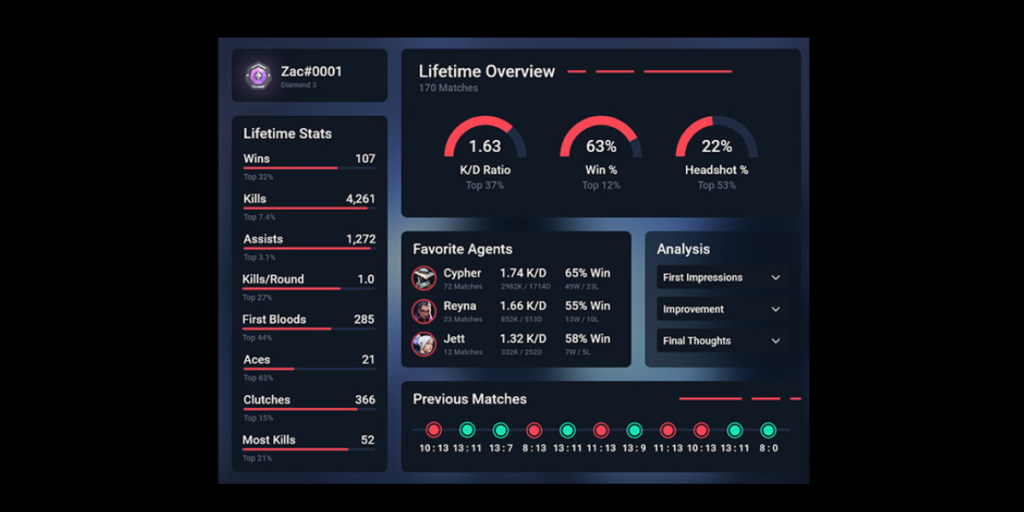In the world of sports, statistics are more than just numbers; they are the language through which performance is quantified, strategies are developed, and histories are recorded. From baseball’s sabermetrics to football’s advanced analytics,match player stats have become a cornerstone of how sports are understood and appreciated. This article delves into the comprehensive world of match player stats, exploring their origins, significance, methodologies, and impact across various sports.
The Evolution of Player Statistics
The systematic recording of player statistics began in earnest in the early 20th century, primarily with baseball. Henry Chadwick, often referred to as the father of baseball, pioneered the use of box scores, batting averages, and earned run averages (ERA) to track player performance. These early metrics laid the groundwork for the more sophisticated statistical analyses we see today.
With the advent of computers and advanced data collection methods in the latter half of the 20th century, sports statistics evolved dramatically. This shift was epitomized by the introduction of sabermetrics in baseball, a term coined by Bill James. Sabermetrics involves the empirical analysis of baseball through statistics, focusing on objective evidence to measure in-game activity.
Key Metrics in Different Sports
Each sport has its unique set of metrics tailored to its specific dynamics and gameplay. Let’s explore the match player stats in some of the most popular sports globally.
1. Baseball:
- Batting Average (BA): Calculated as hits divided by at-bats, BA indicates a player’s hitting success.
- On-Base Percentage (OBP): This measures how frequently a batter reaches base, including hits, walks, and hit-by-pitches.
- Slugging Percentage (SLG): SLG assesses a player’s power, calculated as total bases divided by at-bats.
- Wins Above Replacement (WAR): An advanced stat that estimates a player’s total contributions to their team in terms of wins.
2. Basketball:
- Points Per Game (PPG): The average number of points scored by a player per game.
- Assists Per Game (APG): The average number of assists a player makes per game.
- Player Efficiency Rating (PER): A comprehensive metric that summarizes a player’s statistical accomplishments in a single number.
- True Shooting Percentage (TS%): An advanced stat that accounts for field goals, free throws, and three-pointers to measure shooting efficiency.
3. Football (Soccer):
- Goals: The total number of goals scored by a player.
- Assists: The total number of goals a player has set up for teammates.
- Pass Completion Percentage: The percentage of completed passes out of total attempted passes.
- Expected Goals (xG): An advanced metric that estimates the probability of a goal being scored from a particular shot.
4. American Football:
- Passing Yards: Total yards gained through passing.
- Rushing Yards: Total yards gained through rushing.
- Quarterback Rating (QBR): A composite statistic that measures quarterback performance.
- Sacks: The number of times a defensive player tackles the quarterback behind the line of scrimmage.
The Impact of Advanced Metrics
The rise of advanced metrics has revolutionized how we evaluate player performance. These statistics go beyond traditional box scores to provide deeper insights into a player’s contributions.
1. Baseball and Sabermetrics:
Sabermetrics has uncovered undervalued players who excel in less obvious ways. For example, on-base percentage (OBP) was found to be a better predictor of team success than batting average, leading teams to prioritize players who draw walks. WAR (Wins Above Replacement) has become a gold standard for evaluating overall player contributions, accounting for offense, defense, and baserunning.
2. Basketball Analytics:
In basketball, metrics like PER (Player Efficiency Rating) and TS% (True Shooting Percentage) have provided more comprehensive evaluations of players. PER combines various statistical categories into a single number to summarize a player’s effectiveness, while TS% adjusts for the efficiency of shots taken, including three-pointers and free throws.
3. Soccer and Expected Goals (xG):
The introduction of Expected Goals (xG) in soccer has transformed how analysts assess scoring opportunities. xG calculates the likelihood of a goal based on various factors, such as the shot’s location, angle, and type. This metric helps distinguish between luck and skill in goal-scoring and defensive prowess.
4. American Football and Advanced Passing Metrics:
In American football, advanced metrics like QBR (Quarterback Rating) and DVOA (Defense-adjusted Value Over Average) have refined how quarterbacks and teams are evaluated. QBR incorporates situational factors and the context of plays, offering a more nuanced view of quarterback performance than traditional passer ratings.
5. Ice Hockey’s Corsi and Fenwick:
Advanced stats like Corsi and Fenwick in ice hockey measure puck possession by tracking shot attempts. These metrics have shown a strong correlation with team success, as controlling the puck often leads to more scoring opportunities.
The Role of Technology in Player Stats
The integration of technology has been pivotal in the evolution of match player stats. Innovations such as wearable devices, high-speed cameras, and machine learning algorithms have transformed data collection and analysis.
1. Wearable Devices:
Athletes now wear devices that track a wide range of biometric data, including heart rate, speed, distance covered, and fatigue levels. This information helps teams monitor player health, optimize training, and prevent injuries.
2. High-Speed Cameras and Computer Vision:
High-speed cameras and computer vision technology enable detailed analysis of player movements, ball trajectories, and game situations. Systems like Hawk-Eye in tennis and VAR (Video Assistant Referee) in soccer provide precise data for decision-making and performance evaluation.
3. Machine Learning and Big Data:
Machine learning algorithms analyze vast datasets to identify patterns and trends. In sports, these algorithms predict player performance, assess injury risks, and optimize game strategies. Big data analytics allows teams to make data-driven decisions, enhancing competitiveness.
Statistical Analysis and Strategy Development
Statistics play a crucial role in strategy development across sports. Coaches and analysts use data to devise game plans, exploit opponents’ weaknesses, and maximize their own team’s strengths.
1. Baseball: Defensive Shifts and Pitch Selection
In baseball, defensive shifts and pitch selection are heavily influenced by statistical analysis. By studying hitters’ tendencies, teams position fielders more effectively and choose pitches that exploit a batter’s weaknesses. This data-driven approach has become a staple in modern baseball strategy.
2. Basketball: Shot Selection and Lineup Optimization
Basketball teams use analytics to optimize shot selection and lineups. Data shows that three-point shots and attempts near the basket are more efficient than mid-range jumpers. Coaches design plays to generate high-quality shots and adjust lineups to maximize efficiency and defensive matchups.
3. Soccer: Tactical Formations and Player Positioning
In soccer, teams analyze player movements and passing patterns to refine tactical formations and positioning. Advanced metrics help identify the most effective formations against specific opponents and optimize player roles to enhance team performance.
4. American Football: Play Calling and Situational Analysis
American football teams use statistical analysis for play calling and situational decisions. Data on opponents’ tendencies in various situations informs play selection, while advanced metrics guide decisions on fourth-down attempts, punt formations, and clock management.
5. Ice Hockey: Line Combinations and Puck Possession
Ice hockey teams leverage stats to determine optimal line combinations and strategies for maintaining puck possession. Corsi and Fenwick metrics help coaches assess player effectiveness and make adjustments to improve team performance.
The Future of Player Statistics
The future of Match Player Stats lies in the continued integration of technology, machine learning, and real-time data analysis. As these tools evolve, they will unlock new dimensions of performance evaluation and strategic development.
1. Real-Time Analytics:
Real-time analytics will enable teams to make instant adjustments during games. Wearable devices and advanced sensors will provide continuous data streams, allowing coaches to respond to player fatigue, injuries, and tactical shifts on the fly.
2. Augmented Reality (AR) and Virtual Reality (VR):
AR and VR technologies will revolutionize how players train and prepare for matches. These technologies can simulate game scenarios, allowing athletes to practice decision-making and improve their skills in a controlled environment.
3. Enhanced Biometric Analysis:
Advances in biometric analysis will provide deeper insights into player health and performance. Genetic testing, metabolic analysis, and neuroimaging will help teams tailor training regimens and recovery protocols to individual athletes.
4. AI-Powered Scouting and Recruitment:
Artificial intelligence will transform scouting and recruitment processes. AI algorithms will analyze vast amounts of data to identify promising talent, assess player potential, and predict future performance, giving teams a competitive edge in talent acquisition.
5. Global Data Integration:
The integration of global data will enhance cross-sport analysis and innovation. By comparing metrics across different sports, analysts can uncover universal performance principles and apply best practices to diverse athletic disciplines.
Ethical Considerations in Player Statistics
While the advancement of Match Player Stats offers numerous benefits, it also raises ethical considerations. Issues such as data privacy, player consent, and the potential for misuse of data must be carefully managed.
1. Data Privacy:
The collection and analysis of player data must respect individual privacy rights. Athletes should have control over their personal information, and teams must ensure that data is used responsibly and securely.
2. Informed Consent:
Players should be
fully informed about the data being collected and how it will be used. Informed consent is essential to maintain trust and transparency between athletes and teams.
3. Potential for Misuse:
The potential for data misuse, such as unfair profiling or discrimination based on biometric data, must be addressed. Clear guidelines and regulations are necessary to prevent unethical practices and protect player interests.
4. Balancing Performance and Well-Being:
While data can enhance performance, it is important to balance this with player well-being. Over-reliance on statistics may lead to overtraining, stress, and burnout. Teams must prioritize holistic athlete care, considering both physical and mental health.
Conclusion
Match player stats have revolutionized the way we understand, appreciate, and engage with sports. From the early days of basic record-keeping to the sophisticated analytics of today, statistics have become an integral part of the athletic landscape. They provide valuable insights into player performance, inform strategic decisions, and enhance the overall experience for fans and participants alike.
As technology continues to advance, the future of player statistics holds exciting possibilities. Real-time analytics, augmented reality, and AI-powered tools will push the boundaries of what is possible, offering deeper insights and more precise evaluations. However, it is crucial to navigate these advancements ethically, ensuring that data is used responsibly and with respect for players’ rights and well-being.
In the end, while statistics offer a powerful lens through which to view sports, they are just one part of the story. The human element—passion, determination, and the spirit of competition—remains at the heart of athletics. Player stats provide a framework for understanding and improving performance, but it is the athletes themselves who bring the numbers to life, inspiring fans and creating unforgettable moments on the field, court, or rink.







